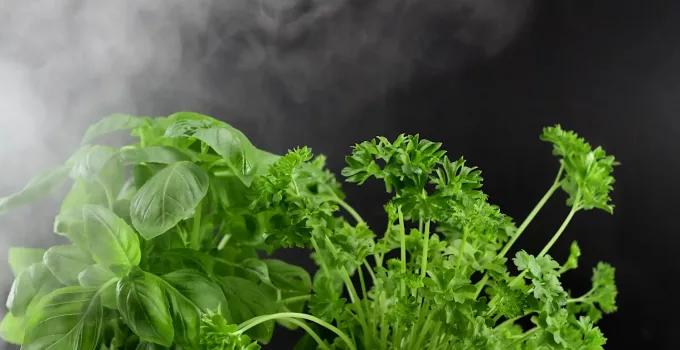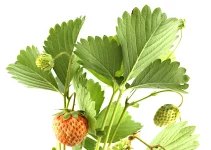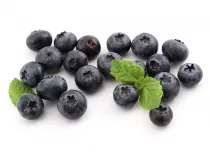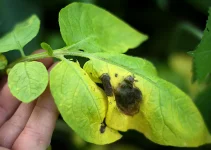Which are the situations when you should be looking for the best plant humidifier? Are the best humidifiers for houseplants any good? Are there other ways to improve the humidity for our houseplants, besides getting a special device to increase the humidity in a room?
All these are quite important questions that will be answered in this article. So, stick around for this complex guide on humidity for houseplants.
I also wrote an article recommending the best humidifiers for grow tents, in case you’re looking for even more options.
Table of Contents
Best Plant Humidifier: My Favorites
The models that I’ll review as best plant humidifiers are not especially made for plants, they’re simply very good, pretty powerful humidifiers that people use for themselves.
Thus, not only will your plants be completely happy with the humidity levels but so will your skin and sinuses.
However,
Take into consideration that you need to know about how much humidity your plants need. You also need to use a hygrometer to monitor humidity levels.
1. Levoit Humidifiers for Large Room Warm and Cool Mist: Best Plant Humidifier for Large Spaces
This is an ultrasonic unit that’s near-silent. You can easily sleep with it in the room and it also has a display-off feature for the night.
The first impressive feature for this best plant humidifier is that it produces both cool and warm mist. It produces 500mL/h. It’s great for all year round use.
Secondly,
This is a unit for large spaces. Don’t buy it if you plan on placing it in a small room.
It covers 753 square feet (70 square meters).
There’s an auto mode that will automatically adjust the mist level to a comfortable level.
It has a 6 L (1.5 gal) water tank, which is quite big. This capacity translates into a continuous run of 60 hours for the low mist level. That’s definitely impressive. If it runs out of water, it automatically turns off.
Although it can run for 60 hours, there’s the option of creating a schedule thanks to its 1-12 hour timer to serve the needs of your houseplants.
It also comes with an aroma box for aromatherapy, if you’re also interested in this aspect.
There’s a remote control to adjust the settings. In the package, a cleaning brush is also included, you can easily clean the tank thanks to its wide opening.
The only big con? This Levoit unit for large spaces is quite pricey. Other than that, it’s one of the best humidifiers for houseplants in large rooms.
2. Levoit Classic 100 Cool Mist Humidifiers for Bedroom: Best Plant Humidifier for Smaller Spaces
If the above option from the same manufacturer is too big and too expensive for you, then you should check out this model instead.
This one is small, compact, and absolutely cute.
It’s another ultrasonic unit that produces cool mist in an almost noiseless way. You can definitely use it while sleeping. It even has an optional night light.
The Levoit Classic 100 has quite a small water tank, 2.4 L, which makes complete sense since this is a model for smaller spaces.
It’s perfect for spaces that measure 107–290 square feet (10–27 square meters). It’s good for larger offices, as well.
The water tank will last for 24 hours on low mist.
It’s still pretty powerful, it has a 250mL/h mist output, promising to quickly bring a nursery or bedroom to 50% humidity.
It works for most plants but I wouldn’t recommend it for tropical plants, which require much higher levels of humidity, at least 70%. This small best plant humidifier from Levoit will work if you combine it with other methods to increase humidity for tropical houseplants.
Impressively, there are 3 mist levels (low, medium, high). Moreover, it also has a 360 degrees rotating nozzle to nicely mist the space without wetting the floors and furniture.
For the price, I don’t think that there’s a better choice. And if you don’t have very demanding tropical plants, it will be an awesome best plant humidifier.
Make sure to read the manual and follow all the instructions.
How to Choose the Best Plant Humidifier
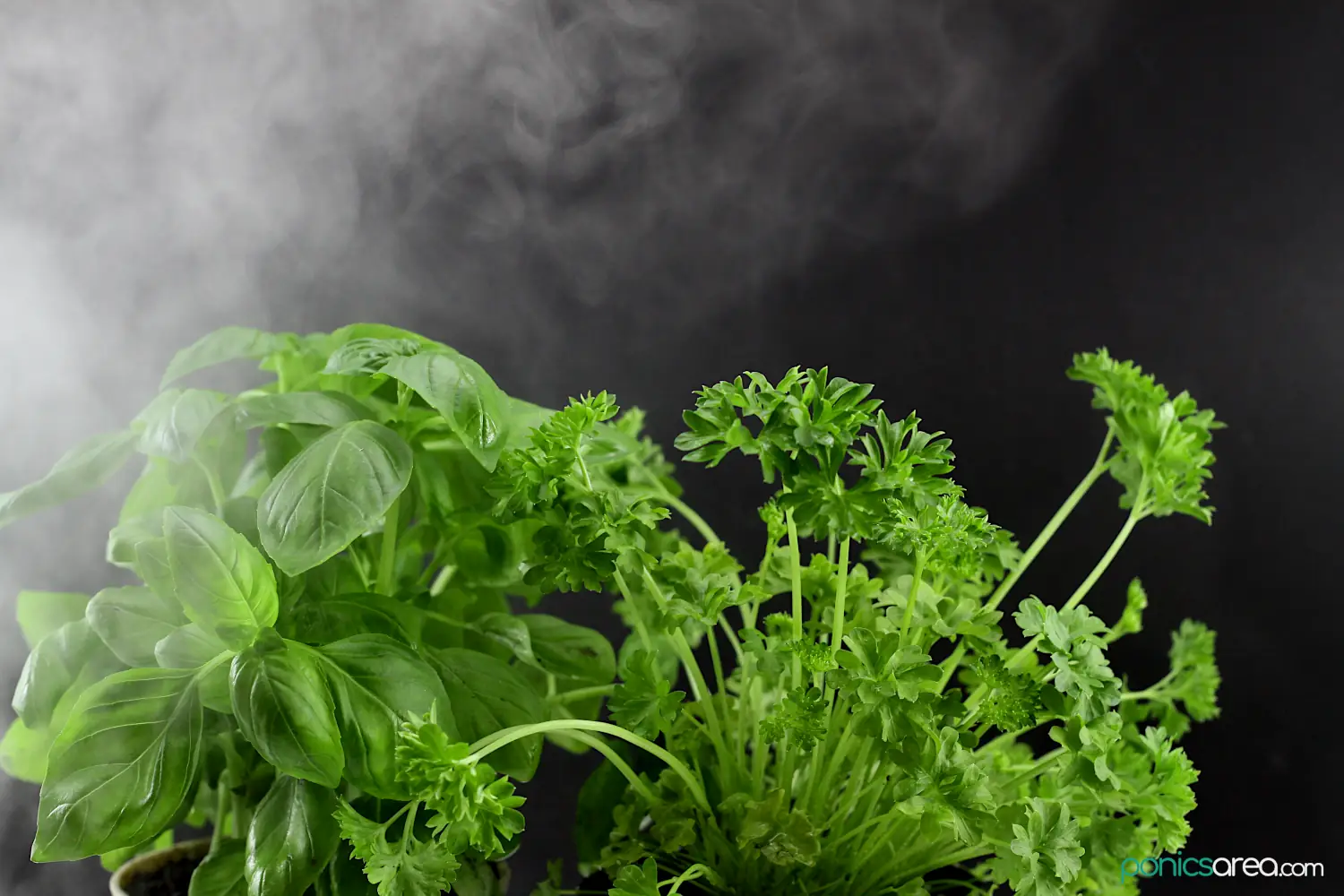
Is a best plant humidifier different than the normal humidifiers that we would buy for us?
They’re not different so, if you’re already using a humidifier for yourself, that model will work for your plants, too.
All you need to remember is that you need a relatively powerful model, meaning that the best plant humidifier that you’re going to choose will be able to discharge a nice amount of moisture.
1. Main Types of Plant Humidifiers
There are two types of humidifiers to choose from and this classification is the first factor that will influence your decision:
- ultrasonic
- evaporative
Both these types are cool-mist producing units, no water is heated to produce the mist. They’re more energy-friendly.
But you can also use warm-mist humidifiers for plants. Those work really well, too.
Ultrasonic
These are the slightly more expensive options for the best plant humidifier. Their teardrop shape is a classic.
They’re called ultrasonic because they use high-frequency vibration in order to produce the mist instead of heating up the water to produce the mist. Due to that, there’s no risk of burns from spills.
They’re also capable of producing extra-fine droplets.
A very important aspect is that there are no filters to change, no hassle in this area.
Ultrasonic humidifiers also don’t have fans, which makes them less noisy.
Both of my recommendations for the best plant humidifier are ultrasonic models and from the same manufacturer. It wasn’t a deliberate choice to have them both be ultrasonic, it just happens that these two models are really very good compared to all the others. That’s it.
Obviously, there are also cons.
The biggest one is actually a consequence of the fact that ultrasonic models don’t heat up the water. Because of that, bacteria and mold growth are very possible. To avoid that, you’ll have to disinfect them regularly.
Another con is the fact that they can produce a fine grayish dust because they have no filters to absorb the minerals in the water. You can combat that by using distilled water but it can be pricey in the long term.
Evaporative
They’re less popular than the ultrasonic ones, even though they’re more affordable and the most common units, being in use for decades.
These are the more affordable option but keep in mind that these units do have fans, which can make them more noisy. If you’re buying a best plant humidifier for your office plants, I wouldn’t consider the evaporative type.
A fan is used to speed up the evaporation of water from a wick. So, it also produces the mist without heating up the water.
Another thing that might contribute to them being less popular than ultrasonic units might be represented by the fact that their filters need to be changed to prevent mold and bacteria. The alternative is to clean and disinfect the filters.
The filters might need to be changed once every 2-3 months, there are instructions to guide you.
If you don’t spend too much time in that room, the noise will be of no concern for you. You can definitely go for these more affordable units.
2. Room Size
This is the second factor that you must pay close attention to. Let me tell you why.
The unit will indicate how many square feet will be able to humidify, they’ll also indicate if they’re good just for small spaces.
One that can humidify 25 square feet is very good for a small office.
For a small bedroom, you should look for models that claim to humidify 100 square feet.
On the other hand, don’t choose a model that’s too powerful for your space because that will cause condensation, which can lead to mold and bacteria. Room size does matter when choosing the best plant humidifier or a unit for your personal use.
You should also keep in mind that it’s best to place a humidifier 6 feet away from your plants.
3. Tank capacity
This is not such a big factor when choosing the best plant humidifier. A smaller tank just means that you’ll have to refill the tank more often.
The important thing to look for is that the unit matches the size of your space.
4. Lifespan
Both type of units can last two to five years. Mineral deposits might force you to buy a new one.
5. Cleaning
You absolutely need to clean your unit regularly. Read the user manual and follow the instructions exactly.
If you’re using only distilled water, the cleaning will go down more easily but that’s quite expensive over time.
To remove hard mineral deposits, you can use distilled white vinegar.
To disinfect it, you can use a small amount of bleach (2 teaspoons per gallon) in cool water.
Why You Should Look for the Best Humidifier for Plants
Many of us live in homes with central heating for the long winter months and rely heavily on our ACs for the insufferable summer months.
We’re well aware of how the dry harsh air in the winter affects our skin and our sinuses. ACs remove humidity from the air as a direct consequence of cooling. Both these modern comforts can dry out the air into a room. Which is why you might be finding yourself searching for the best plant humidifier.
Should searching for the best plant humidifier be at the top of your concerns when it comes to taking care of your houseplants?
The answer is pretty much no. If the answer were a resounding yes, then I’m pretty sure that a lot more people would even be aware of the fact that plant humidifiers are even a thing. I’m pretty convinced that this is not widespread information.
We tend to worry about picking out the best potting soil/mix, we’re worried about watering habits, we even want to know how much sunlight a plant should get, pruning in some cases, and eventually we’re concerned if fertilizers are something we should be more aware of.
Shopping for the best plant humidifier is simply not something that most people are preoccupied with.
Why is that? Simply because most plants grow fantastically well in average humidity. Most of the times, there are no reasons for searching for a best plant humidifier.
That doesn’t mean that getting a humidifier for your plants can’t be beneficial. I’ll also talk about how humidity affects plants, what happens when levels are too low/too high, and which are the other ways are to improve humidity for plants, besides the use of a humidifier.
4 General Humidity Levels for Houseplants
You can measure humidity levels indoors with a hygrometer, they’re very cheap and they have high accuracy. Plus, a hygrometer is small so they’ll be inconspicuous in your house.
There are 4 general humidity levels:
- tropical weather at 80%-90% – this level will not be encountered in temperate regions, can be achieved for plants grown in greenhouses, there are definitely are some plants which require these extreme humidity levels and, thus, are grown in greenhouses/glasshouses
- ideal level at 60%-80% – for most plants, especially tropical varieties, I would say that this is the ideal level but it’s really difficult to maintain this range without help, like using a best plant humidifier or some other options that I will be talking about below
- most frequent humidity level indoors at 40%-60% – if you’ve ever measured the humidity level inside your house, then this is the range that you’d probably gotten but the numbers can be quite frequently closer to 40%, which is quite low for most plants
- below 40% – during the winter thanks to central heating and during the summer thanks to ACs, the humidity can go well below 40% and that’s when we as well as our houseplants need some extra help, which can come in the form of a best humidifier for plants and for us (succulents and cacti will adapt to these low humidity levels without problems)
Which Plants Love High Humidity?
- plants native to rain forests can need as much as 90% humidity
- fern varieties – some will need 80% humidity
- African violets
- peace lily
- orchids
- bromeliads
- pilea peperomioides (Chinese money plant/UFO plant)
- alocasia
- air plant
- monstera
- watermelon peperomia
- bamboo
- heart leaf philodendron
- tradescantia zebrina
- anthurium
- dracaena
- majesty palm
- fiddle leaf fig
By the way, some people call them bathroom plants so, if your houseplants are not doing well, move them in the bathroom, if you have the space.
To give you a general range, most of these plants will thrive in 70%-90% humidity levels, that’s the optimal range for them.
Which Plants Love Low to Medium Humidity?
- succulents and cacti – some varieties can thrive in humidity as low as 20% but 30%-35% levels are great
- one very popular succulent that has awesome benefits is the snake plant – it pretty much thrives in any conditions and it’s a popular office plant, used for increasing concentration
- aloe plant is another succulent with impressive benefits, does well in any conditions as long as it has access to sunlight
- English ivy can handle medium humidity, very resilient
- spider plant – you can just mist it from time to time if the air gets really dry
- jade plant
- wax plant
- spineless yucca
- areca palm – a medium humidity above 40% is recommended
- corn plant (40%-50% levels)
- string of pearls
- silver squill
- kalanchoes
- scented geranium
- arrowhead vine
- clivia (stunning when it flowers)
How Humidity Can Influence Plants
Low humidity can lead to:
- dry leaves
- brown leaves at the tip or along the edges, usually the tip gets brown when the humidity gets too low
- flowers can shrivel up
- leaves can curl inward or grow misshapen
These symptoms are also similar to underwatering so, you should measure humidity levels before deciding that it’s the factor causing these symptoms.
Very high humidity is not good for some plants either, leading to:
- fungus
- losing leaves and branches, eventually dying
Overwatering can also cause these symptoms.
How to Improve Humidity Levels for Houseplants
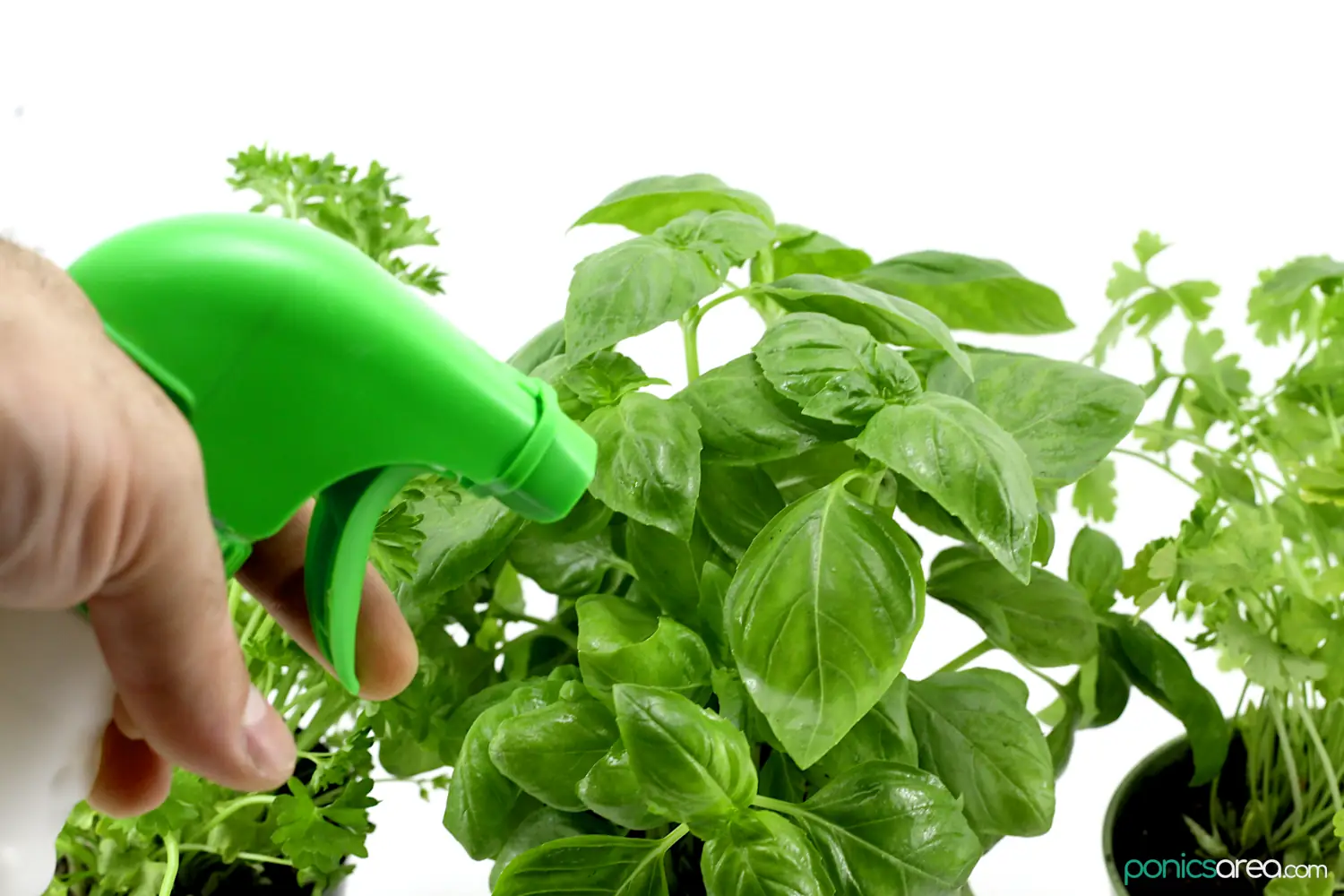
If you don’t want to spend money shopping for the best plant humidifier, there are a few things that you can attempt to improve humidity levels for plants.
This is how you can easily improve humidity levels for plants:
- misting – this is one of the simplest actions that you can take if you feel that the humidity in the room is too low, you just have to use a plant mister filled with tepid water and gently mist the leaves, it obviously works really well for tropical plants who thrive in a humid environment (like crotons) but it has an effect for a short time and, if the water stays on the leaves for too long, it can lead to fungus in colder temperatures
- grouping plants – this is another easy-to-execute solution, it doesn’t require much time and it can work really well because plants grouped together will imitate the behavior of forests, the air & moisture will be trapped between them and they can even use each other’s moisture
- placing containers with water in the room – you just have to place some bowls or saucers of water in the rooms experiencing low humidity, you should place them out of touch if you have children or pets running around
- you can build a sort-of rudimentary plant humidifier – it’s actually called a humidity tray, consisting of pebbles or gravel covered in water, leaving just the pebbles at the top completely dry; place the potted plant on top of the dry pebbles/gravel and it will absorb the moisture by itself
- getting an aquarium – not only will it provide moisture but the water from the aquarium can serve as gentle fertilizer for plants (if you know anything about aquaponics, you know why I’m saying that)
Thus, you have other alternatives to buying the best plant humidifier or methods that can be used in tandem with a humidifier for houseplants, you can try any of them because they’re quite easy to execute.

